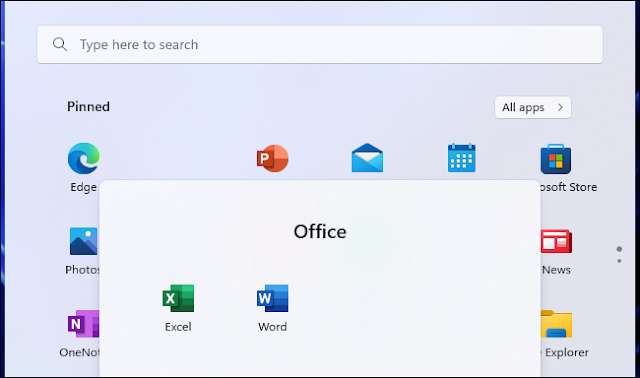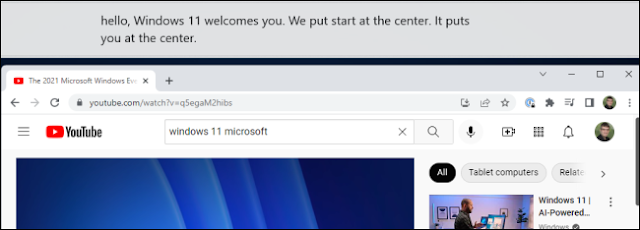What 's New in Windows 11 2022 Update: Top 10 New Features 22H2
The Windows 11 2022 Update is here. This first update, also known as 22H2, was codenamed "Sun Valley 2" during development. With Windows 11, Microsoft has moved to a yearly release cycle for major updates, leaving behind the hectic twice-a-year Windows 10 schedule.
What you need to know
The final name of this update is the 2022 Update, and Microsoft released it on September 20, 2022.
Its name during development was 22H2 as it was released in the second half of 2022. Microsoft is on an annual release cycle for major updates, and Windows 11 was released on October 4, 2021, so the update arrived almost a year after the original Windows 11 release day.
The free update will be offered via Windows Update on Windows 11 PCs. You'll see it as an option at the top of the window in Settings > Windows Update when it's available for your device. If you want to install the update before Windows Update offers it to your PC, you can install Windows 11's 2022 Update another way.
Note : We'll focus on what we think are the most interesting changes here. As always, there are many bug fixes, performance improvements, security patches, and small tweaks throughout the operating system. For example, Microsoft has renamed "Windows Terminal" to "Terminal".
New task manager
Windows 11 now features an updated and updated Task Manager with some new features. As always, you can press Ctrl + Shift + Esc to open it, right-click the Start button and select Task Manager, launch Task Manager from the Start menu, or press Ctrl + Alt + Delete Then click "Task Manager" to open it.
The Task Manager interface now looks more at home on Windows 11. It's similar to how Microsoft handled the Notepad update: all the standard functionality is still there. However, the interface has been updated — it even now supports dark mode, and the highlighting of the resource usage columns on the Processes tab uses the accent color you chose.
Under the Processes tab, you will also find the Efficiency Mode option. You can manually enable this for certain processes to reduce their power usage. Certain processes, such as some Microsoft Edge processes, use similar technologies automatically and will show a terminal icon in their status column.
Drag and drop the taskbar
One huge missing feature is back: You can now drag and drop files, pictures, and other stuff to your taskbar icons. This was a huge feature that many Windows users loved in Windows 10 and previous versions of Windows.
Now, it's back and works for the most part as you'd expect. However, when you drag something onto the taskbar icon, you'll still see a circle with a line in it, which means you can't drag and drop. However, when you drag to an app icon, Windows 11 will switch to the relevant window and you can drag and drop directly into that window, as usual.
Unfortunately, you still can't move the taskbar—not without a registry hack, anyway.
Tabs in File Explorer (in October)
File Explorer is finally getting tabs, years after Microsoft discontinued the Collections feature it was going to add to Windows 10. The feature isn't available to everyone as of the release of the September 2022 Update, but Microsoft says it will arrive in October 2022.
Tabs work as you would expect them to - File Explorer gets a tab bar at the top of every window. You can use keyboard shortcuts like Ctrl + T to open a new tab and Ctrl + W to close the current tab, drag and drop tabs to move them around, and middle-click folders to open them in a new tab - just as you can middle-click links to open them in a tab new in your web browser.
sudden improvements
Snap layouts and Snap collections are one of the best developments in Windows 11. Snap just got even better in the 2022 Windows 11 Update with some new features.
Now, when you move any window on your desktop, you will see a handle at the top of your screen. You can drag the window to the handle and choose a location for it in the Snap Layouts grid. It should make Snap discovery easier for more Windows 11 users.
Do you prefer to use the keyboard? You can now press Windows + Z and the Snap Layouts grid will appear with numbers. Click on one of the numbers that appear to choose a location for the window.
Windows will also remember Snap Sets you make and show them when you hover your mouse over the taskbar icon. This will make it easier to switch between groups of windows.
Edge finally gets into the action: When you close a window to one side of the screen, you'll see three recently used Edge tabs as options you can snap next to the window, just as you see Edge browser tabs at Alt + Tab.
You can configure all of these features from the Settings app at Settings > Multitasking > Snap.
Start menu improvements
App Shortcuts folders return to the Start menu in the 2022 update. It works just as it does on mobile platforms like iPhone, iPad, and Android.
In the "Pined" area of the start menu, simply drag and drop an app icon over another app icon. You will get a folder containing both icons. You can click on the folder to open it, give it any name you want, and drag additional icons onto it to add it to the folder.
You can now choose additional Start menu layouts from Settings > Personalization > Start as well, choosing to see more installed apps or more recommended items automatically.
Bluetooth device connections on the taskbar
The Quick Settings area is seeing a bunch of changes in the 2022 update, and one of the most useful is the ability to view, connect to, and disconnect from Bluetooth devices without opening the settings window.
It works just like connecting to Wi-Fi networks. Just like with Wi-Fi, you can now open the quick settings menu, tap or tap the arrow to the right of the Bluetooth icon, and you'll see a list of paired Bluetooth devices as well as nearby Bluetooth devices that you can pair.
New print queue and print dialog
Windows 11's printing features get a nice new redesign and a coat of paint, too. Both the system print dialog (what you see when you click File > Print in most applications) as well as the print queue window have been redesigned. It now supports dark mode as well as automatically detecting and installing printers without visiting the Settings app.
Live captions for any audio
Windows 11 now has Live Captions (just like in Android.) When enabled, Windows will automatically display captions for any audio you're listening to on your PC, whether it's an audio call you're in, a video you're watching online or any thing else. The audio is copied locally on your computer - not uploaded to the cloud.
To enable it, find "Live Captions" in the Start menu or click the Quick Settings menu button to the left of the clock in the taskbar, click the "Accessibility" button in the Quick Settings menu, and toggle to Live Captions. "
The best voice changer
Windows 11 now has a new volume change indicator that appears when you use the volume keys on your keyboard to adjust the volume. It looks like it belongs in Windows 11. (The new design appears when you change the screen brightness, too.)
Even more exciting, you can now hover your mouse over the volume icon on the taskbar and use the mouse wheel to raise or lower the volume. It would be easy to miss this improvement if you've never heard of it, and we think it's pretty cool.
Two new apps, including a video editor
Windows 11 now has two new built-in apps: Clipchamp and Family.
Clipchamp is a video editor that Microsoft acquired in 2021. When Microsoft first added it to Windows, it required a $9 per month subscription to output 1080p video. Fortunately, this limitation has been removed. Clipchamp has a free tier, but it still offers optional paid monthly subscriptions . Its premium features are not integrated with a standard Microsoft 365 subscription as of June 2022.
The app offers an easy way to edit videos, create clips, add audio, configure transitions, and export your video in web-friendly formats. It is a long-awaited application after the demise of the beloved Windows Movie Maker. (Windows 10's hidden video editor couldn't quite fill its niche.)
Windows now also includes a Family app. It works in conjunction with Microsoft Family Safety, allowing parents to configure app and game time limits, respond to requests from their children's accounts for more time, configure content filtering, and share locations. Some of these features require Microsoft 365. Before this app existed, many of these features were only available on the web.
And much more
There are a lot of other changes in the Windows 11 2022 Update (22H2). For example, Microsoft has spent time adding a lot of settings to the Settings app and reorganizing some of the existing settings. The Focus feature has been renamed Do Not Disturb. There are new gestures for touchscreens, like swiping left with three fingers to switch to the most recently used app. Windows 11 now supports broadband speech with AirPods.
Is it worth upgrading?
None of these features are really groundbreaking, but they all add up to a solid minor elemental upgrade with a slew of improvements throughout. Many of them are obvious improvements to be made - for example, the ability to drag and drop to the taskbar. Over time, it will be difficult to remember which of these changes were made in the 2022 Update and which were part of the original version of Windows 11. If you are using Windows 11, it will definitely be a great upgrade.
If you're not using Windows 11 yet, you can upgrade it for free — assuming your PC supports it. If your computer doesn't support Windows 11, there are a few ways you can install it anyway. Third-party developers help: The Rufus utility makes it easier than ever to install Windows 11 on unsupported PCs.
However, Windows 11 definitely works better on newer PCs, and Windows 10 remains supported until October 2025. We think people with unsupported PCs should stick with Windows 10 for now. Windows 10 works well, and you're likely to run into fewer errors if you stick to a properly supported version of Windows.
Ultimately, if you have an unsupported computer and you really want to use Windows 11, the best way to get it is to buy a new computer that supports it. If that means you're using Windows 10 for a few more years until you upgrade, you're not missing out. Windows 10 works great.












Post a Comment